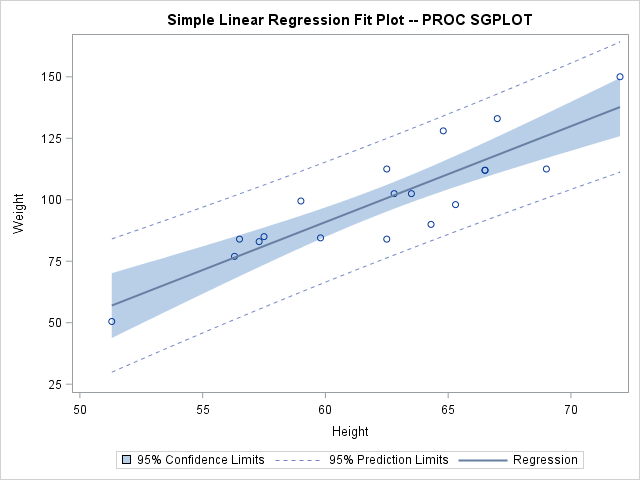I sincerely hope this question has not been posted already since I do hate wasting the time of others. With that said, how do I change the Main Title in the fit plot produced by PROC GLM. For example, in the plot below, how do I change 'Fit Plot for mpg' to lets say 'Fit plot for Miles per Gallon'.
- Fitplot, then rather than using fcline options, you should select options that affect the specified plottype from the options in scatter; seeG-2 graph twoway scatter. fitarea options specify how the confidence interval is rendered; seeG-3 fitarea options.
- Wolfram Community forum discussion about How do I add the fitted line to the chart? Stay on top of important topics and build connections by joining Wolfram Community groups relevant to your interests.
- FitPlot¶ class sherpa.astro.plot. FitPlot source edit on github ¶. Bases: sherpa.plot.Plot Combine data and model plots for 1D data. The preferences for the plot. Note that the display for the data and model plots are controlled by the preferences for the dataplot and modelplot objects, so this is currently unuse.
Matlab Fit Plot


Has anyone noticed that the REG procedure in SAS/STAT 12.1 produces heat maps instead of scatter plots for fit plots and residual plots when the regression involves more than 5,000 observations? I wasn't aware of the change until a colleague informed me, although the change is discussed in the 'Details' section of the PROC REG documentation for SAS/STAT 12.1.
Here is how the fit plot looks for fewer than 5,000 observations:
With fewer than 5,000 observations, I get the usual fit plot that consists of a scatter plot overlaid with a curve of predicted value, a band for the confidence interval for the mean, and dashed lines that indicate the confidence intervals for individual predictions. (The confidence limits are barely visible. Click the graph to enlarge it.) However, watch what happens when I use more than 5,000 observations:
Fitflop Shoes
The scatter plot is gone, replaced by a heat map that shows the density of the data. The predicted values are still present, although the graphical style used to draw it is different, which results in a red line. The confidence intervals are gone.
Overall, this is a nice feature and I think that the change is a good idea. The reason for the change is easy to understand: scatter plots suffer from overplotting when there are many points, so it is more useful to visualize the density of the observations than the individual observations. Furthermore, although scatter plots are very fast to construct, when there are many points a heat map (which bins observations) is faster to compute and render than a scatter plot.
The plot does not currently include confidence intervals, but there is no reason why these can't be added in a future release. However, the confidence interval for the mean predictions will usually be tiny for large data sets—already it is barely visible in the plot of 4,000 points.
Fitpilotvim
Controlling the appearance of the heat map
Prior to SAS/STAT 12.1, the REG procedure created a fit plot as a scatter plot for small data sets (less than 5,000 points). For larger sample sizes, the procedure suppressed the fit plot. The behavior was controlled by using MAXPOINTS= option on the PLOTS= option on the PROC REG statement.
Fitplot Mac
In SAS/STAT 12.1, the MAXPOINTS= option accepts two arguments, and the default values are MAXPOINTS=5000 150000. The first argument specifies the data size for which heat maps are used instead of scatter plots. The documentation of the MAXPOINTS= option states that 'when the number of points exceeds [the first number]but does not exceed [the second number]divided by the number of independent variables, heat maps are displayed instead of scatter plots for the fit and residual plots.' In other words, if you have a regression with k explanatory variables, heat maps are used when the number of observations is between 5,000 and 150,000/k. Of course, you can use the MAXPOINTS= option to change either or both of those values.
Any comments on this new behavior in PROC REG?




